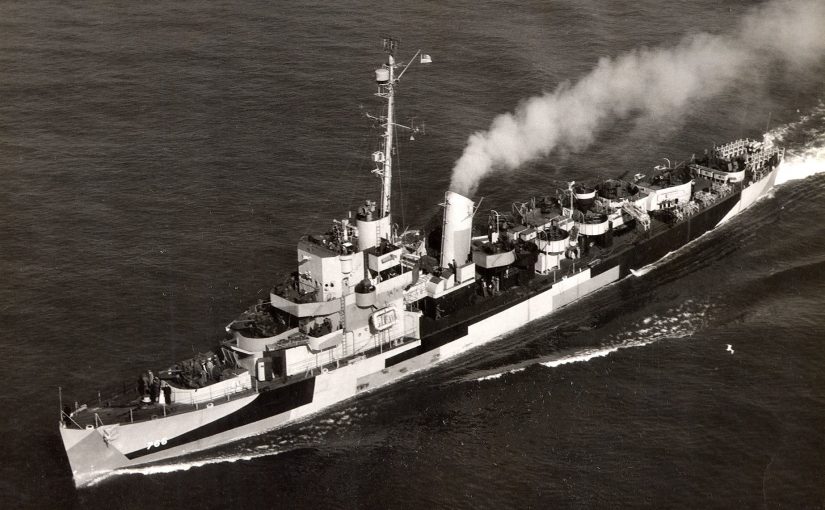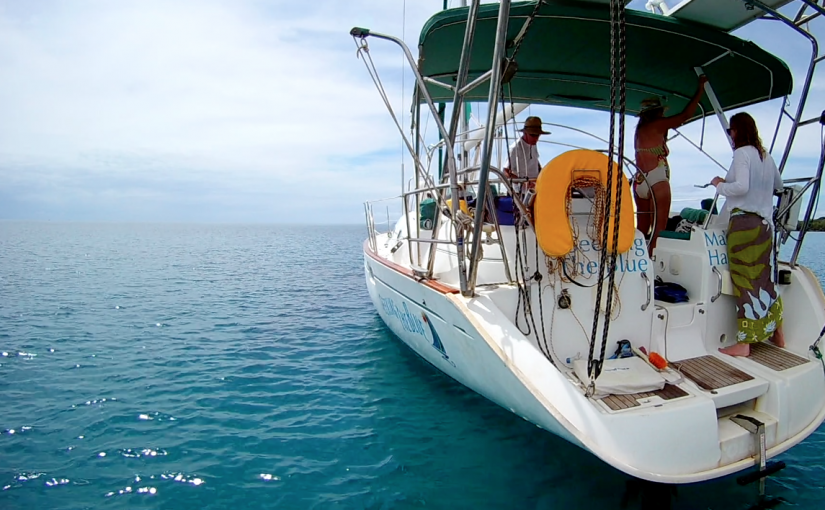Out with the old and in with the new is a phrase we’ve all heard. In fact, the DIY spirit is often centered around transforming something old into something new. But what happens when that old thing isn’t just a secondhand knickknack, but rather a part of American history? Fred Antico, a volunteer aboard the USS Slater, had to consider this carefully. Along with his trusty sewing companion, the Sailrite® Ultrafeed®, Fred has been revamping numerous upholstery projects for this national treasure with great results.
Looking Back
As one of 563 similar ships built between 1943 and 1945, the USS Slater DE766 is a CANNON class destroyer escort that served in the United States Navy during World War II. The ship was named after Frank O. Slater, an Alabama-born sailor who lost his life during the Battle of Guadalcanal in 1942. Destroyer escorts, like the USS Slater, were built to remedy a serious shortage in anti-submarine vessels in the Atlantic Ocean during the war. These ships combined heavy anti-submarine and anti-aircraft weapons alongside cutting edge technology to help them secure a victory for the Allied forces in the Atlantic.
The USS Slater had an illustrious history during World War II in both the Atlantic and Pacific, where it escorted 176 merchant ships across the Atlantic without any losses. Following the end of the war, Slater was deactivated and transferred to the Hellenic Navy in Greece and renamed AETOS, where it remained until 1951. Forty years later, under the care of the Destroyer Historical Foundation, the ship was transferred back to the United States.

After arriving in New York City in 1993, Slater has since undergone tremendous restorations and is one of less than a dozen surviving destroyer escorts. Entire crews worked tirelessly to restore her back to her prime 1945 condition. The painstaking process included removing Greek modifications, chipping and repainting the hull, decks and bulkhead, and reinstalling tons of authentic WWII naval equipment. Two decades of renovations later, the USS Slater is now a floating memorial to both destroyer escorts of the time and those who served aboard them.
Today, civilians have the unique opportunity to visit and tour the USS Slater in Albany, the capital of New York. It seems fitting, as more destroyer escorts were named for New York naval heroes than any other state, numbering 44 in total. The Destroyer Escort Historical Museum is open to guests of all ages, offering an up-close and personal look at the USS Slater as well as other ships. The USS Slater is even listed on the National Register of Historic Places; in fact, it’s the only ship of its type to have maintained its original WWII configuration.

Preserving a Legacy
It was a during his time as a professor teaching television and radio production that Fred Antico became connected with the USS Slater. When the ship was first brought to Albany, it was undergoing extensive refurbishing projects — a perfect subject for students practicing video production. Fred asked those in charge of Slater if his students could come aboard and document the ship’s rehabilitation for a more hands-on teaching experience. The ship’s superintendent, Tim Rizzuto, welcomed Fred and his budding videographers and photographers. As a great supporter of Fred’s educational efforts, Tim even set up interviews with volunteers working on the ship and those who had previously served on ships like the USS Slater.
Fred explained that he and Tim are currently editing a video of the ship’s recent hull restoration with hopes to turn the multitude of photos and video footage into a documentary about the project. “When Tim and I were discussing the video project, I noticed the condition of some of the upholstered seats and mentioned that I would be willing to volunteer my upholstery skills. That lead to what I expect will be many upholstery projects. Our first was to create new cushions for the sofa and an armchair in the officer’s wardroom.”
Something Old, Something New
Fred decided to take up upholstery as a hobby following his retirement. He was no stranger to the DIY world, as his father and two uncles ran an upholstery shop in Albany, New York between the 1950s and 1970s — a place where Fred spent a lot of time as a child. But how did the Ultrafeed become part of the mix? Most of Fred’s sewing experience came from books, articles and the internet. During one of those sewing-related internet searches, he managed to stumble upon the Sailrite Ultrafeed LSZ Sewing Machine.

“This being my first serious go at upholstery, I was cautious about investing in an expensive machine. I found the Ultrafeed to be affordable and certainly capable of what I needed. But just as important were the support materials — the guides and supporting videos.”
For the USS Slater projects, the goal was to make the updated pieces look as close to the original as possible to match the rest of the historically-accurate renovations. Fred explained that in order to accomplish this, he researched manufacturer pictures of what the item originally looked like in order to perfectly replicate them. There aren’t any deadlines, so Fred takes great care to experiment until the desired result is achieved. He then creates templates to expedite the reupholstery process for future items with the same design.

Ultrafeed in tow, Fred successfully revamped a 1940s era Art Deco sofa and multiple chairs aboard the ship, ensuring they look as close to the original as possible. For the couch, the Naugahyde Universal fabric, zippers, upholstery foam, Dacron batting and spray adhesive used to complete the project were all acquired from Sailrite. Fred was thankful to have gleaned techniques from the Sailrite videos to baste parts before sewing by using staples and hiding the zipper under the underlining fabric on the back panel of the cushion.

The Ultrafeed machine has been a huge help in this endeavor as well, with Fred explaining, “The Ultrafeed is an excellent machine to use right out of the box, which is how I used mine for about a year. Later, I upgraded by adding the Industrial Sewing Table and Workhorse™ Servo Motor. When producing multiple items like the seat cushions, I needed to make them as uniform as possible…I’ve seen highly experienced upholsterers sew seams at high speeds without a problem, but for a novice like me, being able to sew slowly enables me to stay on the stitch line whether it’s on a straight line or going around a corner. The Workhorse Servo Motor does that.”
Fred also explained that the most rewarding aspect of the work he does for the USS Slater is the company — between Tim Rizzuto and the many volunteers that work on the ship and for the Naval Historical Museum. “They are dedicated to educating future generations about WWII vessels and the people who worked aboard them. And I’m happy to be able to make a small contribution towards that effort.”
Modern Day Slater
Today, the USS Slater serves as a constant reminder of those who served in WWII, and its extensive renovations have helped maintain its status as a historical landmark to educate young and old alike. Walking aboard the ship is like taking a step back in time, and Fred’s authentic upholstery projects have helped guarantee this. And here at Sailrite, we’re proud to have assisted in this noble venture. If you’d like to learn more about the USS Slater or plan your own visit, follow this link: https://www.ussslater.org/.

Who We Are
Sailrite is your one-stop DIY shop! We are a passionate crew of do-it-yourselfers who strive to equip you with the supplies and how-to knowledge you need to tackle your next project. Do you want to learn upholstery, leatherwork, canvaswork, hobby sewing, bag making or more? We have the fabric, tools, hardware, sewing machines and notions you need to master any DIY. And even if you’ve never sewn before, our tutorials and how-to videos are designed for beginners and experienced crafters alike.
Start your DIY journey today: www.sailrite.com






